PORTUGAL (central and south) and SPAIN (southern Andalusia) in a couple's travel
HELLO
here is the story of the last two week trip
in the company of Carmen, my ex-partner and mother of my daughter
the story is hers and I welcome it since she writes better than me I will post photos in the next few days
PORTUGAL – ANDALUSIA 23/4 – 8/5/2006
Sunday 4/23
After a 2.5 hour flight we arrived in Lisbon where there is still light, we fly close to the city which is vast and crossed by the Tagus, which in turn is crossed by two bridges, the old former Salazar, now 25/4 (because also for the Portuguese it is a date that commemorates the liberation from fascism), and the new Vasco de Gama approximately 25 km long. We left our bags at our hotel, which is up a steep hill (it's called Gloria), which also has a tram elevator, currently not in operation, that carries pedestrians up the hill. Our hotel is about 80 m away, thank goodness. We then hiked up to the top where the Barrio Alto is, looking for a place to eat Bacalhao and a kind local lady directed us to a nice little restaurant, where you can magic outdoors, there was a nice fresh wind blowing, or rather cold. . Al Faria is the restaurant. There was a nice Brazilian tourist near us. Good dinner based on cod, but alas 48 euros.
We went back down by nose and also walked through Chado, another neighborhood, considered elegant, and then to the hotel, but not before going to drink a ginginja, a cherry-based alcoholic specialty, muy barato (cheap).
Monday 24/4
Early morning, after breakfast, we go to Figueira street to get the “7 hills” ticket, a daily pass for all the city's means of transport – it costs 3.50 euros – We took the fateful electric 28 which goes up and down the hills of the cities: Bairro Alto, Chado, Alfama, Estrella, Graca, etc.etc. We went to the Castle, we saw the city in detail through a camera obscura, a device that I had already seen in Havana and which is based on a project by Leonardo: it allows you to see the city at 360°.
On the way down on foot we encountered the Cathedral, the Sé, (the cathedrals in Portugal are called Sé – like our cathedral, I think), then Praca Commercio which lies with open arms towards the sea, from there we took tram 15 to Belem,but the Manueline style Monastery of St. Geronimo was closed and we were content to see it from the outside and then the Tower of Belem which when there is high tide is surrounded by the sea – closed – Lunch in a loser place at 29 euros and therefore always on the 15th I return to the city and to the room a little exhausted.
After a small nap and a conciliatory shower, we returned to Praca Commercio for the sunset, but it wasn't right there on the sea, but further NW - too bad - we walked up to Praca Pedro IV to look for Largo do Carmo where it should have been a popular demonstration for 25/4, but after a further hike up to Chado, we realized that there was nothing, a few red flags and banners, few people. Tram 28 to San Vincente where it seems there should have been something, but we didn't have much information and we couldn't find anything, so we moved towards Praca Commercio where there are little places for dinner – excellent 28 euros –
Rua Augustea, a beautiful pedestrian street that starts from Praca Commercio, passes under an arch and goes straight towards Praca Pedro IV, and then a ginginja in a very small place, and then people took the glass and stood outside chatting; we met two Algerians, one is a painter who has already lived in Portugal for 10 years, but who has also been in Italy for a few years – very nice.
Tuesday 4/25
We take a taxi to Europcar, collect the car – a brand new black Punto – and set off. We paid 101 euros more to have the all inclusive clause. Overall it cost us around 350 euros from today until 2/5 in the morning when we will leave it in Faro.
After about 90' we arrive in Evora, a beautiful town perched gently on a hill, with white and yellow houses, an austere Gothic church, a Roman theatre, a convent now used as a hotel (posada) and a beautiful Gothic church of S. Francesco, where there is also a crypt full of well-placed bones and skulls, we avoided the show and stopped in a little place for a quick little lunch and left for Tomar, through Estremoz, a beautiful village distinguished by a lower part of narrow streets and houses white a fortress with an old manor, church and ancient palace used as a lodge.
We travel along the national roads, through fields that are now blue, now yellow, now white, in relation to the various flowers that invade them.
Large, white patches of dog roses, vineyards, olive groves, you reach Tomar.
A jewel of a town crossed by a river, a beautiful square with a church and the statue of the Templar who built the castle, the paving of the square is in shiny black and white tiles, the castle dominates from the hill.
We found a residential for 29 euros per room: we decided to sleep separately because I have to lie on my back to sleep and therefore snore. Dinner based on cod (but look...), followed by a soup of potatoes, eggs and vegetables. All for 20 euros.
Ginginja in a type of popular cooperative where adults of all ages tried hard to learn cha cha cha steps, continuing to repeat the same piece of music, in the same sequence of steps. In bed because we have traveled about 300 km and we are tired.
Wednesday 26/5
As soon as we got up, up on the top of the hill to visit that complex called the Templars, even they only had the circle of the walls left, the rest was destroyed with contempt to make room for a group of buildings that followed one another in relation to who he ruled the place. When the Templar order was destroyed in 1307 the king passed all the riches and the fortress to the order of Christ which he himself created as a moral alibi for having squandered the Templars and then the same Order was used as a fig leaf for the crimes and the depredations of overseas. The Templar church was almost completely destroyed, a new church was built next to it, in Manueline style, beautiful and particular in its interior. It has a central octagonal temple all sculpted with golden stucco, paintings on all the walls, statues of saints in the loggias. Furthermore, the building is a succession of cloisters, of courtyards one inside the other, a true labyrinth. Everything is majestic, who knows what was in the majesty and sobriety of the Templar style.
Departure for Fatima, after stopping by Europcar to have them tell us the meaning of some lights on the car's dashboard that had come on.
Fatima is an anonymous city in a context that has grown too quickly, in a disorderly manner. The sanctuary is located in a huge esplanade which should gather the faithful. The church is at the top of a staircase from which the colonnades start on the sides which look like an angel with arms open to welcome everyone. At the end of the esplanade there is a place where the Madonna appeared and which welcomes the faithful; whoever has made a vow takes the visit entirely on his knees. Next to it you buy candles, which you light and throw into a sort of large open oven at the top.
The church is nice, but nothing special. Something mystical, something magical is missing.
We leave for Coimbra. After about 1.50 hours, it appears perched on the hill, but with very developed roots at the base. It's a chaotic, busy city, you don't know where to go. There is no precise information, we go blindly. You should eat the car. After about a couple of hours of wandering around, searching etc. we decide to leave and we understand why in one of those pieces of information on the Internet, someone said that after 3 hours he already had athe same idea and was leaving.
If I were to return to Coimbra I would leave the car across the bridge before entering the city and move on foot or by public transport. But by now we were exasperated and left
Figuera de Foz about 1 hour from Coimbra: beautiful town nestled on a large gulf, with a very wide beach and the ocean that laps against it forcefully.
We decide to go down south and after about an hour we arrive in Leira to get stuck in brutal local traffic, without directions, to get lost. Finally, after asking left and right, we find the road to Batalha. When you arrive, you see this huge church with an adjoining convent, in Manueline style. We are looking for a hotel and thanks to the usual local old man we find a small apartment with two bedrooms and a shared bathroom for 50 euros.
Dinner in a cod-based restaurant and then to bed.
Thursday 4/27
After breakfast based on pastelleria, we went to see the church of S. Maria della Vittoria in Manueline style, grandiose, Gothic with tombs inside. We met the Italian couple who had already met Gianni and did the visit with them. After the ritual greetings, we moved to Alcobacasa where there is a significant monumental complex consisting of a Gothic church with an adjoining vast convent with notable rooms, even the kitchens are surprising, with enormous hoods.
From there we moved to Nazarè, on the Atlantic, it must have been a wonderful little village, now it is very urbanized. It was famous for women who sat on the beach waiting for their husbands who arrived from the sea. The elderly still wear very wide, curly, rather short skirts of heavy Scottish cloth with large checks, wool socks below the knee and large wool shawls. We moved to Abidos, a large and isolated church before the town and inside powerful crenellated walls that can all be explored with narrow walkways, it is really pretty, licked like our S.Gimignano or something else, from there we went to Peniche on one of the westernmost points of Portugal, the high coast tormented by sea waves that have sculpted strange rock monuments overlooking or inside the ocean that crashes violently with a thousand splashes and swirling foams. The upper bank is dotted with flowers and succulents of a thousand colors and scents. An exciting vision of my impact with the SEA that doc.
And now Sintra: IN holiday resort in the past and now. Monarchs and lords left their rich and sumptuous summer homes there which we visited. The national palace, the Pena palace with the park located high on the hill, was closed. It seemed to be in a place on Lake Como or Garda due to the particular and rich vegetation, the sumptuousness and particularity of the homes, we thought not to sleep there, it would have cost too much. We set out on an adventure in search of accommodation for the night which took us through Estoril, Cascais and beyond to Setubal to sleep in a hotel on the seafront road. We arrived at around 9pm. Upset, nervous, pissed off. Dinner with fried chocco (which is fried squid that is rather large and has to be chewed for a long time. Dinner and early bed.
Friday 4/28
We took the wrong road and went along the sea, but we ended up in the mouth of a factory.
We took the motorway to Gandara and then on the state road to the sea. Gianni found a place just beach, sea, almost normal and nothing else. I didn't like staying there all day. Reluctantly Gianni agreed to leave and we arrived in Porto Corvo, a town that in high season must be a slut, all built around the original nucleus. There is no one there now, you are alone, but there is also the town, the little streets to walk along in search of shade and a foamy ocean that crashes violently on the rocks that every now and then reveal a ravine with a beach to enjoy. reach by going down paths or ladders. All in the midst of the usual colorful flowers, the smell and the sea breeze are palpable.
To sleep in an attic at a guest house, 40 euros for two rooms. The attic is nice
with windows over the bed, where the birds sing. Lunch at Ignazio's and a walk to digest along the cliff to a large beach which can be reached by steps, relaxation on the beach, where the wind and spray keep you cool, only to then realize upon returning that perhaps the sun has been shining for the first time. too. Phone call home and sunset over the ocean until the sun completely sets.
Little by little we felt the wind getting louder and the warmth less. The seagulls flew in droves stealing food, then suddenly the flights ended, the sun went down just a few moments later and we went to dinner in a beautiful little square with a church, flowerbed, the only one in the town I think. Cataplana which is a fish soup with little broth, with few types of fish, many potatoes and other vegetables, bay leaves to remove the strong flavour. Not bad, but not even the max – 27 euros – a walk into the village and then off to bed.
Saturday 4/29
Breakfast at the pasteleria (pastry shop/bar).
Then straight towards the South. Visited one of the last beaches in the Alentejo: Vila Nova de Montes, pretty with the river entering or trying to enter the sea, leaving a somewhat marshy lake area.
I arrive in the Algarve and the first beach Azerinha de mar is rocky and black with high walls; then from Alejur to Arrifana which can be seen from above, large and recessed, then from Carrepetera with a circular route: Amado crossed by large surfers and Bordeira probably very windy because the sand reaches up to the hills forming dunes and leaving a wide coastline. Going south we decide to sleep in Vila de Bispo which is located a few kilometers from the beach, in the end they put us in the same house with two different entrances, me with a bathroom, Gianni with the shared bathroom. We set off again for Signes after Capo Vincente, the end of the Vicenza coast and heading further SW of Europe. We stop in Beliche on a very protected beach, to get there there is a staircase that is initially gentle, then steep and stepped. Being sheltered, the sun beats down. After a while we go to see the Fortaleza of Signes built by King Enrique I don't know what number, its compass rose on the floor of the courtyard with a diameter of 43 m should be famous, but it is disjointed, it is difficult to guess the rays , if you don't know what it is, it would seem like a strange game of nature.
Let's take a look at the extremely anonymous, tourist-friendly town and return to our little village, from where we go to see the Castelejo beach which we hadn't been able to reach before because we couldn't find the right road. It is very beautiful, long, with black stones at the beginning and around and stacks. We made a long stop to enjoy the last of the sun, then went home for a shower and had dinner at a good restaurant where we ate good fish, 29 euros.
Sunday 4/30
Departure with the roosters from Vila do Bispo – then Lagos, where we desperately searched for Atalaia where there should have been a mirador, we ended up in anonymous luxurious neighborhoods with golf courses. We went for a tour of the city which still has a part of the walls towards the sea, a gate from which a steep slope rises and behind the seafront the historic center develops which is then the neighbourhood, or rather the original town, before the speculation got his hands. We went to Punta della Piedade from where you can see from above a very suggestive development of rocks, stacks, arches over the sea etc.. Lagos beach is to the south of the country and is an ocher strip of several kilometres.
Going towards Portimao, we saw some beaches: Praia de Roche, very beautiful with stacks and very large. From Portimao we went up to Silves, a town under a fortress with a passable walkway. The fort is limited and inside there are excavations that suggest pre-existing settlements probably destroyed by the earthquake.
Albufeira city which has expanded considerably around the old core. The seafront is nice and also the beach crowned by the town. Oios d'agua and S.Eulalia beaches, very popular.
Faro is a cute little town with a nice historic centre.
Olhao, 10 km from Faro, a beautiful town with a beautiful historic centre, with narrow streets, alleys, etc.
Inside Loulè, a few kilometers N from the lighthouse with a door that enters the walls, there is a nice centre, small but nice.
Tavira, beautiful with particular pyramid-shaped tiled roofs, many churches, beautiful streets. We found an elderly lady who told us about the city, its beaches, Santiago and Santa Maria and she never stopped, it was clear that she loved the city. I liked it a lot too. Return to Faro and luckily we found a residential in the center 2 steps from the station and the Europcar, but it wasn't done on purpose at all, pure luck,
25 euros each single. Sardine-based dinner that kept us up and down all evening. We had to take a walk around the beautiful pedestrian center which also has a small walled area with access from a door that looks like an entrance hall. Finally capirinha and sangria to digest and go to bed.
I'm sorry for not having done what I wanted, even if it wouldn't have been entirely right. I'm talking about the spontaneous flowers of the Alentejo, those that were found near the Atlantic coast, very colorful flowers, with the structure of a succulent plant or saxifrage, of wonderful colors and shapes, I thought I would find them all over the Algarve, but alas from the Vicenza coast towards Spain transitions to Mediterranean-type vegetation. At the castle of Signes I was almost willing to steal a flower for quality, but it needed a small knife that I didn't have and then it always gets put off. Never put off what you can do today. The older I get, the more proverbs seem right to me!
Another reflection: I had brought Saramago's book (Portuguese writer - Nobel Prize winner) "Journey to Portugal - which I finished in Spain and I realized that I should have used it as a mini-guide as it is a set of trips and itineraries made by writer to see Portugal through the eyes of a profound connoisseur of its history, its art and an admirer of even popular artistic expressions, considered of lesser value, but which have deep roots in the culture of the country, also more particular news, which no art or tourist book gives you, in addition to unthinkable itineraries that take you into the bowels of the country. Of course it would take a lot of time, but I regret, for example, not having learned in front of the Temple of Diana in Evora that it was not really dedicated to Diana, that it was used for centuries as a city slaughterhouse and only in recent years has it been returned to its ancient splendor, or that in Tomar in the Manueline church up there at the Templar fortress, the very particular little temple I was talking about, was used to celebrate weddings, until a few years ago, and the various guests broke off pieces of stucco, etc. as souvenirs. degrading and ruining the structure, to the point of convincing those in charge to close these events and other small pearls…. Too bad!
Monday 1/5
Last day of Portugal. Yesterday Gianni wanted to do everything as if he were worried about not being able to see everything or perhaps he wanted to be as close as possible to Faro for the car drop off. Today, after a tour of the city on foot, we took the car and went to Estoi and Milreu. The Roman excavations of Milreu closed. In Estoi they were preparing the pine cone festival, on the doors of the houses there were stuffed puppets dressed in work or home clothes that represented a profession: the weaver, the shepherd, the road worker etc. The famous villa was closed and it seems that it is close to becoming a Posada.
Afterwards in full sun, Gianni has the thought of going to the beach of Faro - near the airport. Kilometers of beach that separates from the mainland because a river passes through it. There is a narrow bridge with traffic lights which slows down daytripper traffic a lot. We stopped far behind and walked quite a bit of the way. The beach was full of people, normal beach, with normal sea. After 6 hours of sun we left cooked and bored in every sense. I took a dip in the ocean, the water was sparklingly cool. Return for a shower and dinner in a pizzeria-restaurant: we wanted to try the Portuguese pizza we ate in Brazil, but that wasn't the case and the grilled cod was a kind of botched omelette in which the cod wasn't there for me. Patience. Wives and oxen from your countries! But the Portuguese pizza in Rio was so good and big…. In bed early, we are strange because the sun is reacting to us, we are sneezing and shivering.
SPAIN – Tuesday 2/5
Get up early for the departure operations: suitcases at the station, car at Europcar. Train to S.Antonio de la Vila at 9am. We arrive in S.Antonio at 10am Spanish time, we take a taxi to Aiamontes, the first Spanish town and from there by bus to Huelva, on foot to the train station to discover that we still have to go to Cadiz go to Seville. We take the train to Seville where 45 minutes later there is the one to Cadiz. Then looking for a room; in the end we find a 4th floor loser, without lift, shared bathroom 25 euros per room. Dinner in a place approved for tourists without praise and infamy; let's go to the bus station for timetables and information for the next transfers.
Cadiz is a town of Roman origins and perhaps for this reason it has straight streets that intersect with other, square ones; the historic center is structured like this, then there are some beautiful avenues along the perimeter of the walls. Our hotel is in the center of the streets 500 m from Piazza di Spagna.
However, it is strange that there is no communication from Portugal to Cadiz. You have to pass through Seville, perhaps due to the territory which has an area of canals along the coast that starts from Faro and extends up to here.
Wednesday 3/5
Uncertain weather. We ask for the whales. They tell us that the transition month is July/August. We begin to take a tour of the ramparts that correspond to the seafront, after passing by the old (under restoration) and new (closed) cathedrals. The seafront extends along all the ramparts, as Cadiz is a peninsula that ends in two points. At the end, after the two points, there is the Genoese garden, a kind of botanical garden. We decide to go for an excursion, we take the bus and go to Jerez de la Frontera about 20 km from Cadiz in the direction of Seville; it is a beautiful town, famous for dessert wines. There is a beautiful alcazar that shows you how they were organized inside, with gardens, bathrooms, mosque etc. then there is the very majestic cathedral of dark stone (all the churches in this city have this appearance, perhaps it is local material) and this cathedral has arches as supporting buttresses in the upper part, like the French and northern churches. The façade is very elaborate with grotesque figures, the portals are very elaborate.
The interior has the main altar and some side ones, in highly crafted Baroque style that seems Manueline; a beautiful wooden choir and many votive altars, each different from the other. Once we left we wanted to go and see the Byasse winery, but the entrance fee was 17 euros per couple. We retreated to a nearby tavern, full of barrels, where we drank some white wine accompanied by olives, breadsticks and a kind of Bologna (5 euros in total).
One more St. Michael's church, regularly closed, and I return to Cadiz. Small streets, squares, small squares, alleys upon alleys, the things we wanted to see: regularly closed. My foot is a little swollen from walking so much, let's hope for the best! Even though I took the painkiller, the strain is too much. I'm writing from a break we took before going out for dinner.
A nap for my foot and for Gianni's stomach and then looking for a restaurant. After walking up and down the streets of the old city again, we tried the seafront and found a fixed menu restaurant which in my opinion was a little better than the one yesterday.
In short, here there are few bookshops, I haven't seen any newsstands, few restaurants, but because their distribution is evidently different, the bars here become fixed menu restaurants; there are bars that make flying plates, as happens at midday here in the cities affected by tertiary workers, except that here it is also in the evening. The bars are full of people talking, drinking, watching the game, there is a very developed social life: from 6pm to 9pm everyone is in the streets doing laps, then the women retire, the men go to the bars, in taverns with their friends.
We saw Cadiz far and wide, even if beyond the train station there is the whole modern part that we saw on the bus, a little anonymous, but a real city, with the sea behind it.
Thursday 4/5
Wake up early and walk to the bus station. 9.00 am departure for Algeciras. We arrive at 11. Gianni goes to look for a guesthouse he finds, good for 25 euros per room.
The city is a kind of North African branch, as all ferries and communications depart from here. It's a very Arab city, the locals, the people etc. The port has a large parking lot of cars, containers and trucks behind it; the seafront promenade is therefore squeezed between the busy main road and this large rest area. The sea is almost invisible. We went to Tarifa, because they don't know anything about whales here. Tarifa is pretty, with the Alcazar that dominates it, the walled city and the port, higher up the modern city probably built with tourism. Yes, here we do cetacean spotting, not exactly as Colò says, no satisfaction, no money back. It costs 30 euros with or without whales. Today the rounds are already taken. We'll try tomorrow morning if the weather permits. We have to call to find out if they are going or not.
Upon returning immediately by bus to La Linea, we only changed vehicles at Algeciras station. The Line is located a stone's throw from Gibraltar. It's the Spanish side. To get there you pass a vast industrial area, a commercial area and finally, after the refinery, you see the cliff of Gibraltar with the town lapped by the sea at its feet. From the bus station to the border a few hundred meters, but to get to the city center there are at least 2 km. You pass inside the airport which is crossed by the road and is a narrow strip between the sea and the city. The town consists of a pedestrian street surrounded by houses with shops on the ground floor, narrow streets branch off to the sides from the main road; on one side the mountain, on the other the road and the sea. Prices are high, you know the pound!
We return by bus to the border, then to the Spanish station and return to Algeciras. We ask for an Arab place for dinner (since we are surrounded by Arabs) they recommend Andalus on the street overlooking the port. I ate a fried fish that I have never eaten here, Gianni the meat tagin, there were no alcohol to dine on, we made do with coke and fruit juice. Only 22 euros, wake up full and light. Phone call home with just 0.45 euros via internet, a mint tea in an exclusively Maghreb restaurant and then to bed. On the horizon this evening there is a dark disturbance that does not bode well. Inshallah!
This morning it's sunny, so we'll try for Tarifa.
We leave our luggage at the station, the bus is only there at 10.15, we hope to make it, because the boat leaves at 11. We ask the driver if he can leave us near the port, given that the stop is over 1 km away, but he has said no, then a quick walk to the pier. Gianni, cute, goes to get the ticket in a hurry, I barely catch the boat. The sea seems a little rough, but perhaps it's my impression, the vessel is not large and the further out you go the more it moves with splashes everywhere, the bags left on the bottom, under the seats, are soaked, so are we . After half an hour, towards Tangier, we begin to see a dolphin, then another, they are much bigger than the ones they serve up in dolphinariums. They measure 4 m. Then there is a small whale with a stumpy snout, there are so many dolphins, they swim next to us, in front, diving, re-emerging, jumping playfully with high leaps, it's exciting. If it weren't for the fact that the pitching of the boat makes me feel sick, I spent the last half hour taking deep breaths and hoping that it would be time to leave soon, I was feeling too sick..., what a rip-off!
But I'm happy to have had the experience. Agitated and excited and perhaps still not too fit, I missed the anorak jacket. Gianni goes to look for her in vain. At 2pm the bus to Algeciras and connection for Malaga, we manage to change the booking time from 5pm to 3pm. We leave and take the motorway which is located high up and allows you to see the coast, as well as there being a large urbanization on the floor , on the tops of the hills they build massive agglomerations; it's a bit sad.
We arrive after a couple of hours and after asking for information at the information office, we understand that we are a little out of the way, we find a good hostal for 35 euros and we decide to stay there, it's a stone's throw from the station.
Let's go and see the city, very beautiful, the center is about 20' from our hotel, we see the Picasso museum with about ten rooms with a few works each - 6 euros. After a careful tour of the centre, which is almost entirely pedestrianised, we look for the usual restaurant and in the end we end up in a squalid place where we pay a lot for bad food. A delicious glass of wine in a tavern full of barrels, where they ask for a dessert wine, then we drink what the neighbors were drinking, excellent! Tomorrow evening again.
At the station to see the bus timetables for excursions and to bed.
Saturday 6/5
I don't know why, but wake up early, bus to Ronda 8.15am, the sky is cloudy, but then the sun comes, then goes away etc., the journey is long, you pass through Torremolinos, other nearby beaches, from the sea the landscape isn't it seems so horrible, anonymous, but the condominiums have small green spaces, there is a seafront etc., after Marbella the road goes up and arrives in a mountain area, it seems halfway between the Gransasso and the Carso, you can see this stone gray everywhere and tufts of Mediterranean scrub or similar, i.e. low bushes, brooms and other flowers of the kind. Ronda is truly beautiful: stately homes, narrow streets, then there is this now almost dry stream which over the centuries has built a road between the rocks, 160 m below, has cut them, forcing man to build bridges to cross it ; in fact there is a Roman bridge on which posterity then worked, there is an Arab bridge and finally a new bridge which dates back to around 1800, which divides or unites the older city from the less old new one (around 1800) . The older part also has buildings of Arab origin, the cathedral itself was created from a mosque and the bell tower with multiple compositions, you can guess the old minaret. From the lower Arab bridge, the road climbs up, through stone-paved streets, here and there it asks for locks, there is one that seems to date back to the Visigoths. In the new part there is one of the oldestplaca de toros in Spain.
From the new bridge it is suggestive to look towards the valley at those very high sheer cliffs covered by moss and in some places terraced with small gardens, norias etc.
On the way back from Ronda we find a bus an hour earlier than expected and we take another road: the sierra de les nieves, a very beautiful natural park, with pastures, uncontaminated areas, ups and downs and then we come across the first white villages: El Burgos, etc. up to the floor where you meet the highway which takes us to Malaga in a few kilometres.
After a short shower, at the center for the last purchases, the ritual photos; under the fortress in a neighborhood there is a popular festival to raise funds for a future religious procession that each neighborhood organizes, adorning huge elaborate altars, to be transported. We go to eat in the places where they serve tapas, we ate what they eat, drank what they drink, we had a great time, even if we were perched on high stools with barrels as a table.
Around again, a glass of wine at our tavern and then to the hotel.
Sunday 7/5
I'm sorry and I'm happy. I'm sorry that the trip is over, I would have always continued if I didn't have ties at home, mom, Mari, cats, etc. money that is not eternal. The experience with Gianni wasn't bad, maybe I'm no longer afraid of losing what I've never had, I'm more myself with the pros and cons, if it pisses me off, it pisses me off and I don't hide my disappointments . Perhaps as Gianni grew older, he became more vulnerable, malleable. I must say that on this journey he was attentive, almost always available, more open to others, to my needs. I'm happy to see you again on this. It means that we will be able to go on our trips again, to keep each other company, because traveling alone is often sad, etc. We will see! With this I don't want to say anything more, our story is over, but perhaps a "travelers' company" could be re-founded, that's all.
Take the bus calmly to Torremolinos, a nice town, not that small, on the contrary. There is also a pedestrian area that goes towards the sea, which is below and to reach it there is a road with comfortable steps or an elevator. The beach is wide, equipped, but leaves a large area for free swimmers. The sea is cold and with a light foam on the shore. We take an umbrella and two deckchairs for 8 euros. We relax there all day. We hiked back to the bus stop which is located in another area, 300 m beyond the one where we got off this morning. The bus in Malaga stops in another area, because it is a local line, a city walk to the hotel. Shower and walk to the center. This evening I was really tired of walking. Dinner in a tapas place, where we have a good dinner of all types of tapas, we spend 30 euros. But it is the last supper. We allowed ourselves to do it. There were a few people around who asked for charity from the patrons of bars and restaurants or played for money. A varied world, Poor people!
Last evening, wake up at 6 tomorrow and return to Italy
here is the story of the last two week trip
in the company of Carmen, my ex-partner and mother of my daughter
the story is hers and I welcome it since she writes better than me I will post photos in the next few days
PORTUGAL – ANDALUSIA 23/4 – 8/5/2006
Sunday 4/23
After a 2.5 hour flight we arrived in Lisbon where there is still light, we fly close to the city which is vast and crossed by the Tagus, which in turn is crossed by two bridges, the old former Salazar, now 25/4 (because also for the Portuguese it is a date that commemorates the liberation from fascism), and the new Vasco de Gama approximately 25 km long. We left our bags at our hotel, which is up a steep hill (it's called Gloria), which also has a tram elevator, currently not in operation, that carries pedestrians up the hill. Our hotel is about 80 m away, thank goodness. We then hiked up to the top where the Barrio Alto is, looking for a place to eat Bacalhao and a kind local lady directed us to a nice little restaurant, where you can magic outdoors, there was a nice fresh wind blowing, or rather cold. . Al Faria is the restaurant. There was a nice Brazilian tourist near us. Good dinner based on cod, but alas 48 euros.
We went back down by nose and also walked through Chado, another neighborhood, considered elegant, and then to the hotel, but not before going to drink a ginginja, a cherry-based alcoholic specialty, muy barato (cheap).
Monday 24/4
Early morning, after breakfast, we go to Figueira street to get the “7 hills” ticket, a daily pass for all the city's means of transport – it costs 3.50 euros – We took the fateful electric 28 which goes up and down the hills of the cities: Bairro Alto, Chado, Alfama, Estrella, Graca, etc.etc. We went to the Castle, we saw the city in detail through a camera obscura, a device that I had already seen in Havana and which is based on a project by Leonardo: it allows you to see the city at 360°.
On the way down on foot we encountered the Cathedral, the Sé, (the cathedrals in Portugal are called Sé – like our cathedral, I think), then Praca Commercio which lies with open arms towards the sea, from there we took tram 15 to Belem,but the Manueline style Monastery of St. Geronimo was closed and we were content to see it from the outside and then the Tower of Belem which when there is high tide is surrounded by the sea – closed – Lunch in a loser place at 29 euros and therefore always on the 15th I return to the city and to the room a little exhausted.
After a small nap and a conciliatory shower, we returned to Praca Commercio for the sunset, but it wasn't right there on the sea, but further NW - too bad - we walked up to Praca Pedro IV to look for Largo do Carmo where it should have been a popular demonstration for 25/4, but after a further hike up to Chado, we realized that there was nothing, a few red flags and banners, few people. Tram 28 to San Vincente where it seems there should have been something, but we didn't have much information and we couldn't find anything, so we moved towards Praca Commercio where there are little places for dinner – excellent 28 euros –
Rua Augustea, a beautiful pedestrian street that starts from Praca Commercio, passes under an arch and goes straight towards Praca Pedro IV, and then a ginginja in a very small place, and then people took the glass and stood outside chatting; we met two Algerians, one is a painter who has already lived in Portugal for 10 years, but who has also been in Italy for a few years – very nice.
Tuesday 4/25
We take a taxi to Europcar, collect the car – a brand new black Punto – and set off. We paid 101 euros more to have the all inclusive clause. Overall it cost us around 350 euros from today until 2/5 in the morning when we will leave it in Faro.
After about 90' we arrive in Evora, a beautiful town perched gently on a hill, with white and yellow houses, an austere Gothic church, a Roman theatre, a convent now used as a hotel (posada) and a beautiful Gothic church of S. Francesco, where there is also a crypt full of well-placed bones and skulls, we avoided the show and stopped in a little place for a quick little lunch and left for Tomar, through Estremoz, a beautiful village distinguished by a lower part of narrow streets and houses white a fortress with an old manor, church and ancient palace used as a lodge.
We travel along the national roads, through fields that are now blue, now yellow, now white, in relation to the various flowers that invade them.
Large, white patches of dog roses, vineyards, olive groves, you reach Tomar.
A jewel of a town crossed by a river, a beautiful square with a church and the statue of the Templar who built the castle, the paving of the square is in shiny black and white tiles, the castle dominates from the hill.
We found a residential for 29 euros per room: we decided to sleep separately because I have to lie on my back to sleep and therefore snore. Dinner based on cod (but look...), followed by a soup of potatoes, eggs and vegetables. All for 20 euros.
Ginginja in a type of popular cooperative where adults of all ages tried hard to learn cha cha cha steps, continuing to repeat the same piece of music, in the same sequence of steps. In bed because we have traveled about 300 km and we are tired.
Wednesday 26/5
As soon as we got up, up on the top of the hill to visit that complex called the Templars, even they only had the circle of the walls left, the rest was destroyed with contempt to make room for a group of buildings that followed one another in relation to who he ruled the place. When the Templar order was destroyed in 1307 the king passed all the riches and the fortress to the order of Christ which he himself created as a moral alibi for having squandered the Templars and then the same Order was used as a fig leaf for the crimes and the depredations of overseas. The Templar church was almost completely destroyed, a new church was built next to it, in Manueline style, beautiful and particular in its interior. It has a central octagonal temple all sculpted with golden stucco, paintings on all the walls, statues of saints in the loggias. Furthermore, the building is a succession of cloisters, of courtyards one inside the other, a true labyrinth. Everything is majestic, who knows what was in the majesty and sobriety of the Templar style.
Departure for Fatima, after stopping by Europcar to have them tell us the meaning of some lights on the car's dashboard that had come on.
Fatima is an anonymous city in a context that has grown too quickly, in a disorderly manner. The sanctuary is located in a huge esplanade which should gather the faithful. The church is at the top of a staircase from which the colonnades start on the sides which look like an angel with arms open to welcome everyone. At the end of the esplanade there is a place where the Madonna appeared and which welcomes the faithful; whoever has made a vow takes the visit entirely on his knees. Next to it you buy candles, which you light and throw into a sort of large open oven at the top.
The church is nice, but nothing special. Something mystical, something magical is missing.
We leave for Coimbra. After about 1.50 hours, it appears perched on the hill, but with very developed roots at the base. It's a chaotic, busy city, you don't know where to go. There is no precise information, we go blindly. You should eat the car. After about a couple of hours of wandering around, searching etc. we decide to leave and we understand why in one of those pieces of information on the Internet, someone said that after 3 hours he already had athe same idea and was leaving.
If I were to return to Coimbra I would leave the car across the bridge before entering the city and move on foot or by public transport. But by now we were exasperated and left
Figuera de Foz about 1 hour from Coimbra: beautiful town nestled on a large gulf, with a very wide beach and the ocean that laps against it forcefully.
We decide to go down south and after about an hour we arrive in Leira to get stuck in brutal local traffic, without directions, to get lost. Finally, after asking left and right, we find the road to Batalha. When you arrive, you see this huge church with an adjoining convent, in Manueline style. We are looking for a hotel and thanks to the usual local old man we find a small apartment with two bedrooms and a shared bathroom for 50 euros.
Dinner in a cod-based restaurant and then to bed.
Thursday 4/27
After breakfast based on pastelleria, we went to see the church of S. Maria della Vittoria in Manueline style, grandiose, Gothic with tombs inside. We met the Italian couple who had already met Gianni and did the visit with them. After the ritual greetings, we moved to Alcobacasa where there is a significant monumental complex consisting of a Gothic church with an adjoining vast convent with notable rooms, even the kitchens are surprising, with enormous hoods.
From there we moved to Nazarè, on the Atlantic, it must have been a wonderful little village, now it is very urbanized. It was famous for women who sat on the beach waiting for their husbands who arrived from the sea. The elderly still wear very wide, curly, rather short skirts of heavy Scottish cloth with large checks, wool socks below the knee and large wool shawls. We moved to Abidos, a large and isolated church before the town and inside powerful crenellated walls that can all be explored with narrow walkways, it is really pretty, licked like our S.Gimignano or something else, from there we went to Peniche on one of the westernmost points of Portugal, the high coast tormented by sea waves that have sculpted strange rock monuments overlooking or inside the ocean that crashes violently with a thousand splashes and swirling foams. The upper bank is dotted with flowers and succulents of a thousand colors and scents. An exciting vision of my impact with the SEA that doc.
And now Sintra: IN holiday resort in the past and now. Monarchs and lords left their rich and sumptuous summer homes there which we visited. The national palace, the Pena palace with the park located high on the hill, was closed. It seemed to be in a place on Lake Como or Garda due to the particular and rich vegetation, the sumptuousness and particularity of the homes, we thought not to sleep there, it would have cost too much. We set out on an adventure in search of accommodation for the night which took us through Estoril, Cascais and beyond to Setubal to sleep in a hotel on the seafront road. We arrived at around 9pm. Upset, nervous, pissed off. Dinner with fried chocco (which is fried squid that is rather large and has to be chewed for a long time. Dinner and early bed.
Friday 4/28
We took the wrong road and went along the sea, but we ended up in the mouth of a factory.
We took the motorway to Gandara and then on the state road to the sea. Gianni found a place just beach, sea, almost normal and nothing else. I didn't like staying there all day. Reluctantly Gianni agreed to leave and we arrived in Porto Corvo, a town that in high season must be a slut, all built around the original nucleus. There is no one there now, you are alone, but there is also the town, the little streets to walk along in search of shade and a foamy ocean that crashes violently on the rocks that every now and then reveal a ravine with a beach to enjoy. reach by going down paths or ladders. All in the midst of the usual colorful flowers, the smell and the sea breeze are palpable.
To sleep in an attic at a guest house, 40 euros for two rooms. The attic is nice
with windows over the bed, where the birds sing. Lunch at Ignazio's and a walk to digest along the cliff to a large beach which can be reached by steps, relaxation on the beach, where the wind and spray keep you cool, only to then realize upon returning that perhaps the sun has been shining for the first time. too. Phone call home and sunset over the ocean until the sun completely sets.
Little by little we felt the wind getting louder and the warmth less. The seagulls flew in droves stealing food, then suddenly the flights ended, the sun went down just a few moments later and we went to dinner in a beautiful little square with a church, flowerbed, the only one in the town I think. Cataplana which is a fish soup with little broth, with few types of fish, many potatoes and other vegetables, bay leaves to remove the strong flavour. Not bad, but not even the max – 27 euros – a walk into the village and then off to bed.
Saturday 4/29
Breakfast at the pasteleria (pastry shop/bar).
Then straight towards the South. Visited one of the last beaches in the Alentejo: Vila Nova de Montes, pretty with the river entering or trying to enter the sea, leaving a somewhat marshy lake area.
I arrive in the Algarve and the first beach Azerinha de mar is rocky and black with high walls; then from Alejur to Arrifana which can be seen from above, large and recessed, then from Carrepetera with a circular route: Amado crossed by large surfers and Bordeira probably very windy because the sand reaches up to the hills forming dunes and leaving a wide coastline. Going south we decide to sleep in Vila de Bispo which is located a few kilometers from the beach, in the end they put us in the same house with two different entrances, me with a bathroom, Gianni with the shared bathroom. We set off again for Signes after Capo Vincente, the end of the Vicenza coast and heading further SW of Europe. We stop in Beliche on a very protected beach, to get there there is a staircase that is initially gentle, then steep and stepped. Being sheltered, the sun beats down. After a while we go to see the Fortaleza of Signes built by King Enrique I don't know what number, its compass rose on the floor of the courtyard with a diameter of 43 m should be famous, but it is disjointed, it is difficult to guess the rays , if you don't know what it is, it would seem like a strange game of nature.
Let's take a look at the extremely anonymous, tourist-friendly town and return to our little village, from where we go to see the Castelejo beach which we hadn't been able to reach before because we couldn't find the right road. It is very beautiful, long, with black stones at the beginning and around and stacks. We made a long stop to enjoy the last of the sun, then went home for a shower and had dinner at a good restaurant where we ate good fish, 29 euros.
Sunday 4/30
Departure with the roosters from Vila do Bispo – then Lagos, where we desperately searched for Atalaia where there should have been a mirador, we ended up in anonymous luxurious neighborhoods with golf courses. We went for a tour of the city which still has a part of the walls towards the sea, a gate from which a steep slope rises and behind the seafront the historic center develops which is then the neighbourhood, or rather the original town, before the speculation got his hands. We went to Punta della Piedade from where you can see from above a very suggestive development of rocks, stacks, arches over the sea etc.. Lagos beach is to the south of the country and is an ocher strip of several kilometres.
Going towards Portimao, we saw some beaches: Praia de Roche, very beautiful with stacks and very large. From Portimao we went up to Silves, a town under a fortress with a passable walkway. The fort is limited and inside there are excavations that suggest pre-existing settlements probably destroyed by the earthquake.
Albufeira city which has expanded considerably around the old core. The seafront is nice and also the beach crowned by the town. Oios d'agua and S.Eulalia beaches, very popular.
Faro is a cute little town with a nice historic centre.
Olhao, 10 km from Faro, a beautiful town with a beautiful historic centre, with narrow streets, alleys, etc.
Inside Loulè, a few kilometers N from the lighthouse with a door that enters the walls, there is a nice centre, small but nice.
Tavira, beautiful with particular pyramid-shaped tiled roofs, many churches, beautiful streets. We found an elderly lady who told us about the city, its beaches, Santiago and Santa Maria and she never stopped, it was clear that she loved the city. I liked it a lot too. Return to Faro and luckily we found a residential in the center 2 steps from the station and the Europcar, but it wasn't done on purpose at all, pure luck,
25 euros each single. Sardine-based dinner that kept us up and down all evening. We had to take a walk around the beautiful pedestrian center which also has a small walled area with access from a door that looks like an entrance hall. Finally capirinha and sangria to digest and go to bed.
I'm sorry for not having done what I wanted, even if it wouldn't have been entirely right. I'm talking about the spontaneous flowers of the Alentejo, those that were found near the Atlantic coast, very colorful flowers, with the structure of a succulent plant or saxifrage, of wonderful colors and shapes, I thought I would find them all over the Algarve, but alas from the Vicenza coast towards Spain transitions to Mediterranean-type vegetation. At the castle of Signes I was almost willing to steal a flower for quality, but it needed a small knife that I didn't have and then it always gets put off. Never put off what you can do today. The older I get, the more proverbs seem right to me!
Another reflection: I had brought Saramago's book (Portuguese writer - Nobel Prize winner) "Journey to Portugal - which I finished in Spain and I realized that I should have used it as a mini-guide as it is a set of trips and itineraries made by writer to see Portugal through the eyes of a profound connoisseur of its history, its art and an admirer of even popular artistic expressions, considered of lesser value, but which have deep roots in the culture of the country, also more particular news, which no art or tourist book gives you, in addition to unthinkable itineraries that take you into the bowels of the country. Of course it would take a lot of time, but I regret, for example, not having learned in front of the Temple of Diana in Evora that it was not really dedicated to Diana, that it was used for centuries as a city slaughterhouse and only in recent years has it been returned to its ancient splendor, or that in Tomar in the Manueline church up there at the Templar fortress, the very particular little temple I was talking about, was used to celebrate weddings, until a few years ago, and the various guests broke off pieces of stucco, etc. as souvenirs. degrading and ruining the structure, to the point of convincing those in charge to close these events and other small pearls…. Too bad!
Monday 1/5
Last day of Portugal. Yesterday Gianni wanted to do everything as if he were worried about not being able to see everything or perhaps he wanted to be as close as possible to Faro for the car drop off. Today, after a tour of the city on foot, we took the car and went to Estoi and Milreu. The Roman excavations of Milreu closed. In Estoi they were preparing the pine cone festival, on the doors of the houses there were stuffed puppets dressed in work or home clothes that represented a profession: the weaver, the shepherd, the road worker etc. The famous villa was closed and it seems that it is close to becoming a Posada.
Afterwards in full sun, Gianni has the thought of going to the beach of Faro - near the airport. Kilometers of beach that separates from the mainland because a river passes through it. There is a narrow bridge with traffic lights which slows down daytripper traffic a lot. We stopped far behind and walked quite a bit of the way. The beach was full of people, normal beach, with normal sea. After 6 hours of sun we left cooked and bored in every sense. I took a dip in the ocean, the water was sparklingly cool. Return for a shower and dinner in a pizzeria-restaurant: we wanted to try the Portuguese pizza we ate in Brazil, but that wasn't the case and the grilled cod was a kind of botched omelette in which the cod wasn't there for me. Patience. Wives and oxen from your countries! But the Portuguese pizza in Rio was so good and big…. In bed early, we are strange because the sun is reacting to us, we are sneezing and shivering.
SPAIN – Tuesday 2/5
Get up early for the departure operations: suitcases at the station, car at Europcar. Train to S.Antonio de la Vila at 9am. We arrive in S.Antonio at 10am Spanish time, we take a taxi to Aiamontes, the first Spanish town and from there by bus to Huelva, on foot to the train station to discover that we still have to go to Cadiz go to Seville. We take the train to Seville where 45 minutes later there is the one to Cadiz. Then looking for a room; in the end we find a 4th floor loser, without lift, shared bathroom 25 euros per room. Dinner in a place approved for tourists without praise and infamy; let's go to the bus station for timetables and information for the next transfers.
Cadiz is a town of Roman origins and perhaps for this reason it has straight streets that intersect with other, square ones; the historic center is structured like this, then there are some beautiful avenues along the perimeter of the walls. Our hotel is in the center of the streets 500 m from Piazza di Spagna.
However, it is strange that there is no communication from Portugal to Cadiz. You have to pass through Seville, perhaps due to the territory which has an area of canals along the coast that starts from Faro and extends up to here.
Wednesday 3/5
Uncertain weather. We ask for the whales. They tell us that the transition month is July/August. We begin to take a tour of the ramparts that correspond to the seafront, after passing by the old (under restoration) and new (closed) cathedrals. The seafront extends along all the ramparts, as Cadiz is a peninsula that ends in two points. At the end, after the two points, there is the Genoese garden, a kind of botanical garden. We decide to go for an excursion, we take the bus and go to Jerez de la Frontera about 20 km from Cadiz in the direction of Seville; it is a beautiful town, famous for dessert wines. There is a beautiful alcazar that shows you how they were organized inside, with gardens, bathrooms, mosque etc. then there is the very majestic cathedral of dark stone (all the churches in this city have this appearance, perhaps it is local material) and this cathedral has arches as supporting buttresses in the upper part, like the French and northern churches. The façade is very elaborate with grotesque figures, the portals are very elaborate.
The interior has the main altar and some side ones, in highly crafted Baroque style that seems Manueline; a beautiful wooden choir and many votive altars, each different from the other. Once we left we wanted to go and see the Byasse winery, but the entrance fee was 17 euros per couple. We retreated to a nearby tavern, full of barrels, where we drank some white wine accompanied by olives, breadsticks and a kind of Bologna (5 euros in total).
One more St. Michael's church, regularly closed, and I return to Cadiz. Small streets, squares, small squares, alleys upon alleys, the things we wanted to see: regularly closed. My foot is a little swollen from walking so much, let's hope for the best! Even though I took the painkiller, the strain is too much. I'm writing from a break we took before going out for dinner.
A nap for my foot and for Gianni's stomach and then looking for a restaurant. After walking up and down the streets of the old city again, we tried the seafront and found a fixed menu restaurant which in my opinion was a little better than the one yesterday.
In short, here there are few bookshops, I haven't seen any newsstands, few restaurants, but because their distribution is evidently different, the bars here become fixed menu restaurants; there are bars that make flying plates, as happens at midday here in the cities affected by tertiary workers, except that here it is also in the evening. The bars are full of people talking, drinking, watching the game, there is a very developed social life: from 6pm to 9pm everyone is in the streets doing laps, then the women retire, the men go to the bars, in taverns with their friends.
We saw Cadiz far and wide, even if beyond the train station there is the whole modern part that we saw on the bus, a little anonymous, but a real city, with the sea behind it.
Thursday 4/5
Wake up early and walk to the bus station. 9.00 am departure for Algeciras. We arrive at 11. Gianni goes to look for a guesthouse he finds, good for 25 euros per room.
The city is a kind of North African branch, as all ferries and communications depart from here. It's a very Arab city, the locals, the people etc. The port has a large parking lot of cars, containers and trucks behind it; the seafront promenade is therefore squeezed between the busy main road and this large rest area. The sea is almost invisible. We went to Tarifa, because they don't know anything about whales here. Tarifa is pretty, with the Alcazar that dominates it, the walled city and the port, higher up the modern city probably built with tourism. Yes, here we do cetacean spotting, not exactly as Colò says, no satisfaction, no money back. It costs 30 euros with or without whales. Today the rounds are already taken. We'll try tomorrow morning if the weather permits. We have to call to find out if they are going or not.
Upon returning immediately by bus to La Linea, we only changed vehicles at Algeciras station. The Line is located a stone's throw from Gibraltar. It's the Spanish side. To get there you pass a vast industrial area, a commercial area and finally, after the refinery, you see the cliff of Gibraltar with the town lapped by the sea at its feet. From the bus station to the border a few hundred meters, but to get to the city center there are at least 2 km. You pass inside the airport which is crossed by the road and is a narrow strip between the sea and the city. The town consists of a pedestrian street surrounded by houses with shops on the ground floor, narrow streets branch off to the sides from the main road; on one side the mountain, on the other the road and the sea. Prices are high, you know the pound!
We return by bus to the border, then to the Spanish station and return to Algeciras. We ask for an Arab place for dinner (since we are surrounded by Arabs) they recommend Andalus on the street overlooking the port. I ate a fried fish that I have never eaten here, Gianni the meat tagin, there were no alcohol to dine on, we made do with coke and fruit juice. Only 22 euros, wake up full and light. Phone call home with just 0.45 euros via internet, a mint tea in an exclusively Maghreb restaurant and then to bed. On the horizon this evening there is a dark disturbance that does not bode well. Inshallah!
This morning it's sunny, so we'll try for Tarifa.
We leave our luggage at the station, the bus is only there at 10.15, we hope to make it, because the boat leaves at 11. We ask the driver if he can leave us near the port, given that the stop is over 1 km away, but he has said no, then a quick walk to the pier. Gianni, cute, goes to get the ticket in a hurry, I barely catch the boat. The sea seems a little rough, but perhaps it's my impression, the vessel is not large and the further out you go the more it moves with splashes everywhere, the bags left on the bottom, under the seats, are soaked, so are we . After half an hour, towards Tangier, we begin to see a dolphin, then another, they are much bigger than the ones they serve up in dolphinariums. They measure 4 m. Then there is a small whale with a stumpy snout, there are so many dolphins, they swim next to us, in front, diving, re-emerging, jumping playfully with high leaps, it's exciting. If it weren't for the fact that the pitching of the boat makes me feel sick, I spent the last half hour taking deep breaths and hoping that it would be time to leave soon, I was feeling too sick..., what a rip-off!
But I'm happy to have had the experience. Agitated and excited and perhaps still not too fit, I missed the anorak jacket. Gianni goes to look for her in vain. At 2pm the bus to Algeciras and connection for Malaga, we manage to change the booking time from 5pm to 3pm. We leave and take the motorway which is located high up and allows you to see the coast, as well as there being a large urbanization on the floor , on the tops of the hills they build massive agglomerations; it's a bit sad.
We arrive after a couple of hours and after asking for information at the information office, we understand that we are a little out of the way, we find a good hostal for 35 euros and we decide to stay there, it's a stone's throw from the station.
Let's go and see the city, very beautiful, the center is about 20' from our hotel, we see the Picasso museum with about ten rooms with a few works each - 6 euros. After a careful tour of the centre, which is almost entirely pedestrianised, we look for the usual restaurant and in the end we end up in a squalid place where we pay a lot for bad food. A delicious glass of wine in a tavern full of barrels, where they ask for a dessert wine, then we drink what the neighbors were drinking, excellent! Tomorrow evening again.
At the station to see the bus timetables for excursions and to bed.
Saturday 6/5
I don't know why, but wake up early, bus to Ronda 8.15am, the sky is cloudy, but then the sun comes, then goes away etc., the journey is long, you pass through Torremolinos, other nearby beaches, from the sea the landscape isn't it seems so horrible, anonymous, but the condominiums have small green spaces, there is a seafront etc., after Marbella the road goes up and arrives in a mountain area, it seems halfway between the Gransasso and the Carso, you can see this stone gray everywhere and tufts of Mediterranean scrub or similar, i.e. low bushes, brooms and other flowers of the kind. Ronda is truly beautiful: stately homes, narrow streets, then there is this now almost dry stream which over the centuries has built a road between the rocks, 160 m below, has cut them, forcing man to build bridges to cross it ; in fact there is a Roman bridge on which posterity then worked, there is an Arab bridge and finally a new bridge which dates back to around 1800, which divides or unites the older city from the less old new one (around 1800) . The older part also has buildings of Arab origin, the cathedral itself was created from a mosque and the bell tower with multiple compositions, you can guess the old minaret. From the lower Arab bridge, the road climbs up, through stone-paved streets, here and there it asks for locks, there is one that seems to date back to the Visigoths. In the new part there is one of the oldestplaca de toros in Spain.
From the new bridge it is suggestive to look towards the valley at those very high sheer cliffs covered by moss and in some places terraced with small gardens, norias etc.
On the way back from Ronda we find a bus an hour earlier than expected and we take another road: the sierra de les nieves, a very beautiful natural park, with pastures, uncontaminated areas, ups and downs and then we come across the first white villages: El Burgos, etc. up to the floor where you meet the highway which takes us to Malaga in a few kilometres.
After a short shower, at the center for the last purchases, the ritual photos; under the fortress in a neighborhood there is a popular festival to raise funds for a future religious procession that each neighborhood organizes, adorning huge elaborate altars, to be transported. We go to eat in the places where they serve tapas, we ate what they eat, drank what they drink, we had a great time, even if we were perched on high stools with barrels as a table.
Around again, a glass of wine at our tavern and then to the hotel.
Sunday 7/5
I'm sorry and I'm happy. I'm sorry that the trip is over, I would have always continued if I didn't have ties at home, mom, Mari, cats, etc. money that is not eternal. The experience with Gianni wasn't bad, maybe I'm no longer afraid of losing what I've never had, I'm more myself with the pros and cons, if it pisses me off, it pisses me off and I don't hide my disappointments . Perhaps as Gianni grew older, he became more vulnerable, malleable. I must say that on this journey he was attentive, almost always available, more open to others, to my needs. I'm happy to see you again on this. It means that we will be able to go on our trips again, to keep each other company, because traveling alone is often sad, etc. We will see! With this I don't want to say anything more, our story is over, but perhaps a "travelers' company" could be re-founded, that's all.
Take the bus calmly to Torremolinos, a nice town, not that small, on the contrary. There is also a pedestrian area that goes towards the sea, which is below and to reach it there is a road with comfortable steps or an elevator. The beach is wide, equipped, but leaves a large area for free swimmers. The sea is cold and with a light foam on the shore. We take an umbrella and two deckchairs for 8 euros. We relax there all day. We hiked back to the bus stop which is located in another area, 300 m beyond the one where we got off this morning. The bus in Malaga stops in another area, because it is a local line, a city walk to the hotel. Shower and walk to the center. This evening I was really tired of walking. Dinner in a tapas place, where we have a good dinner of all types of tapas, we spend 30 euros. But it is the last supper. We allowed ourselves to do it. There were a few people around who asked for charity from the patrons of bars and restaurants or played for money. A varied world, Poor people!
Last evening, wake up at 6 tomorrow and return to Italy
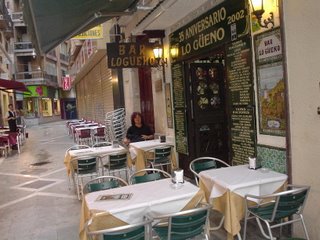



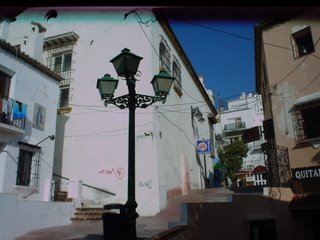

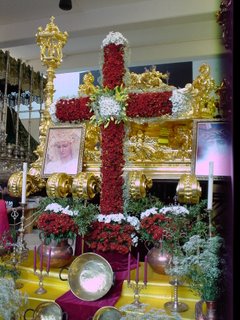




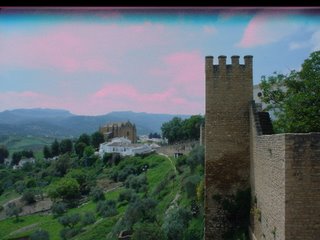
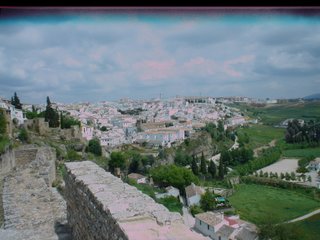

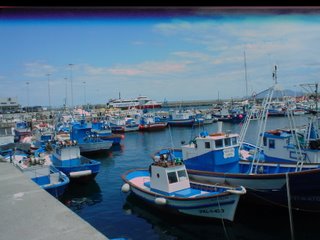
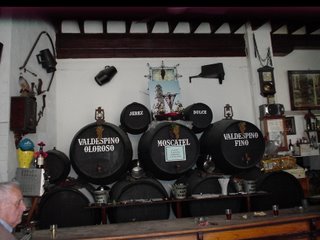
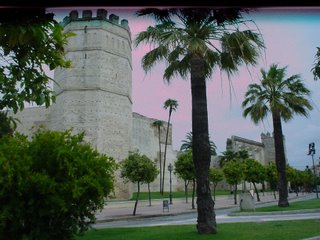
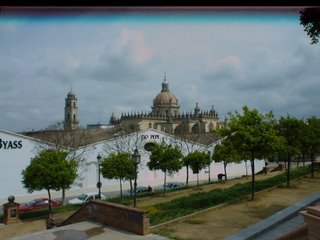
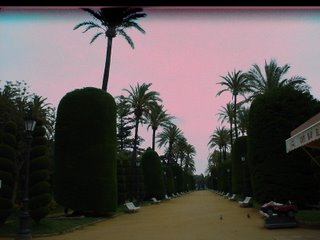
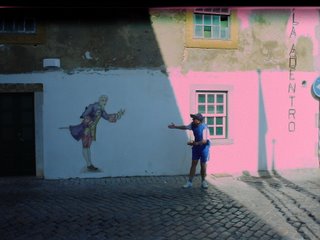

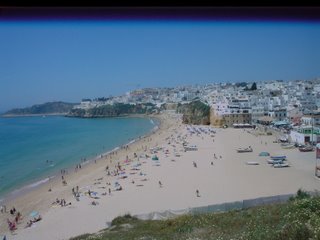
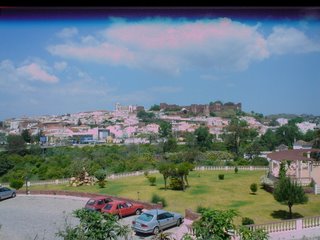
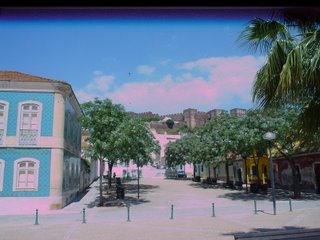
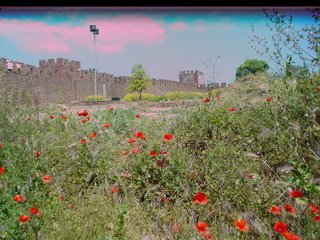


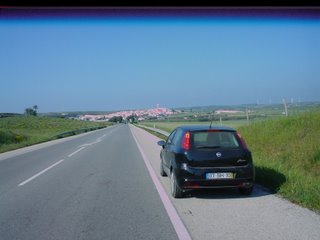


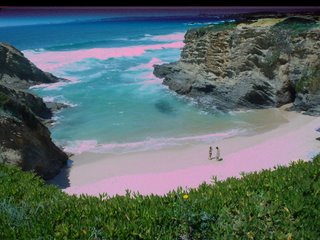
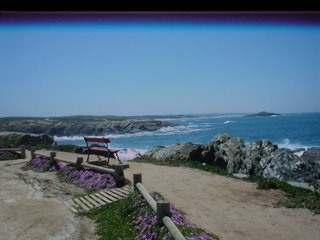

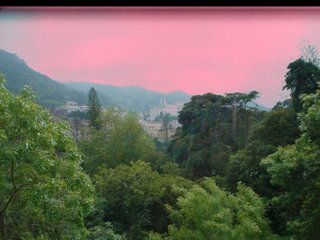






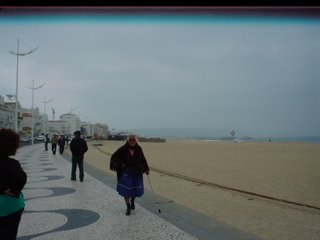
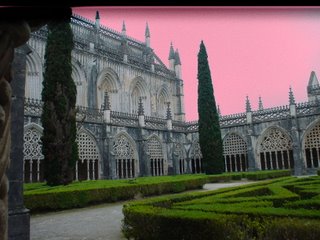
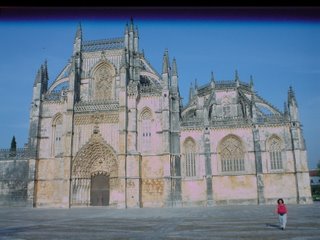

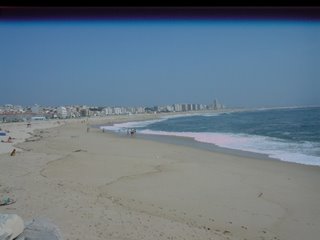





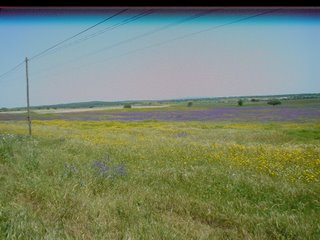

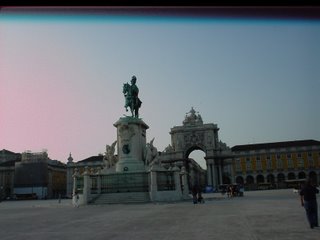
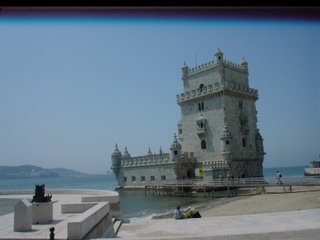

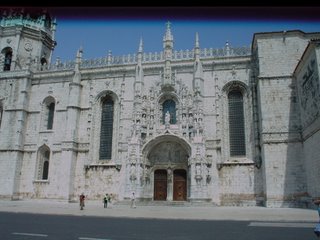
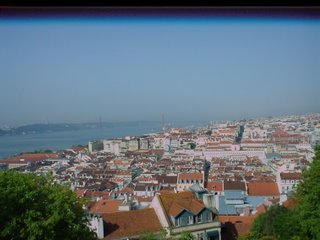
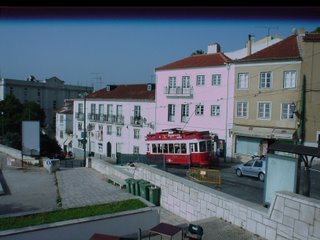
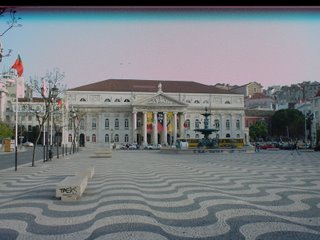


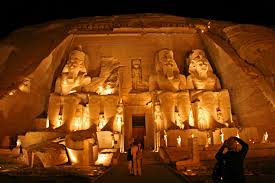
Comments
Post a Comment